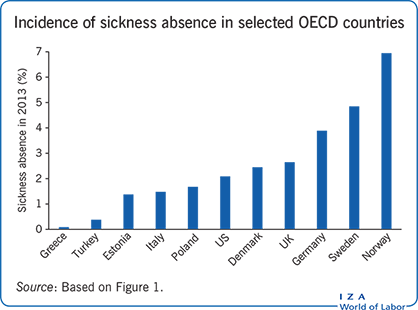Elevator pitch
Do workplace programs help reduce worker sickness absence? Many programs are based on the principle that the employee’s decision to report an absence can be influenced if it is costly to be absent. Firms can reduce absenteeism by implementing broad programs, including performance pay, general improvements of working conditions, and strengthening workers’ loyalty to the firm. Specific programs, such as grading partial absence, seem to be effective at reducing long-term absences. However, firms will be less inclined to implement such programs if they can shift the financial burden to social security programs.

Key findings
Pros
There is substantial variation of sickness absences across firms.
There is strong evidence that employees respond to negative incentives such as lower sick pay; positive incentives such as bonuses and lotteries also seem to be effective.
Absence can be reduced by (costly) improvements of working conditions.
Grading policies (e.g. allowing partial sick leave) for the recovery of long-term absentees are effective.
Some limited evidence suggests that absence is related to workers’ loyalty to the firm.
Cons
It is not valid to dismiss workers in response to their sickness absence; employees may force themselves to go to work while sick, because of fears of excessive financial penalties.
While increasing worker well-being, management programs for multitasking employees seem to increase short-term absences.
The willingness of firms to introduce their own incentive schemes depends on the generosity of social security.